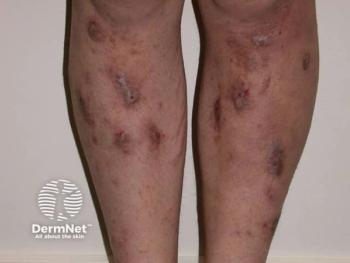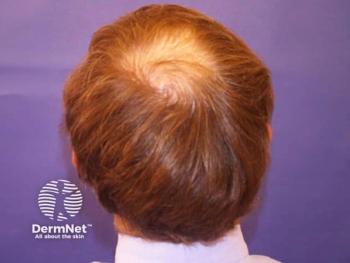
Dinutuximab wins FDA approval for neuroblastoma
FDA has approved dinutuximab (Unituxin, United Therapeutics) in combination with granulocyte-macrophage colony-stimulating factor (GM-CSF), interleukin-2 (IL-2), and 13-cis-retinoic acid (RA), for the treatment of high-risk pediatric neuroblastoma patients who achieve at least a partial response to prior first-line multiagent, multimodality therapy.
The Food and Drug Administration has approved dinutuximab (Unituxin, United Therapeutics) in combination with granulocyte-macrophage colony-stimulating factor (GM-CSF), interleukin-2 (IL-2), and 13-cis-retinoic acid (RA), for the treatment of high-risk pediatric neuroblastoma patients who achieve at least a partial response to prior first-line multiagent, multimodality therapy.
At the same time, the FDA awarded United Therapeutics a Rare Pediatric Priority Review Voucher (PPRV) for neuroblastoma. PPRVs were created in 2012 by the Food and Drug Administration Safety and Innovation Act (FDASIA) to encourage development of treatments for rare pediatric diseases.
Dinutuximab is a chimeric biologic antibody that induces cell lysis of GD2-expressing cells through antibody-dependent cell-mediated cytoxicity (ADCC) and complement-dependent cytoxicity (CDC). FDA approval was based on a multi-center, open-label trial that randomized 226 patients to either the dinutuximab/13-cis-retinoic acid (RA) arm or the RA alone arm. Patients received six cycles of treatment in each arm. The dinutuximab/RA arm consisted of dinutuximab in combination with granulocyte macrophage-colony stimulating factor and RA (cycles 1, 3, and 5), dinutuximab in combination with interleukin-2 and RA (cycles 2 and 4), and RA (cycle 6). Patients were 11 months to 15 years of age, with a median age of about four.
The major efficacy outcome measure was investigator-assessed event-free survival (EFS), defined as the time from randomization to the first occurrence of relapse, progressive disease, secondary malignancy, or death. At the seventh interim analysis, an improvement in EFS was demonstrated and four remaining patients undergoing treatment on the RA arm were switched to dinutuximab/RA. The median EFS was not reached in the dinutuximab/RA arm and was 1.9 years in the RA arm. An analysis of overall survival (OS) conducted three years later found improvement in OS in the dinutuximab/RA arm compared with the RA arm. At the time of this survival analysis, median OS had not been reached in either arm.
The trial identified the most common serious adverse reactions as infections, infusion reactions, hypokalemia, hypotension, pain, fever, and capillary-leak syndrome. Among the most common adverse drug reactions in dinutuximab/RA compared with RA alone are pain, pyrexia, thrombocytopenia, lymphopenia, infusion reactions, and hypotension.
According to a United Therapeutics news release, the approval is the result of a collaborative effort involving the company, the National Cancer Institute (NCI), and the Children’s Oncology Group. The release quotes Malcolm Smith, M.D., of NCI’s Cancer Therapy Evaluation Program, as saying, “The FDA approval of dinutuximab represents the culmination of a remarkably productive collaboration between researchers of the NCI-supported Children’s Oncology Group, the manufacturing and clinical research groups of NCI, and the oncology team at United Therapeutics. Children with neuroblastoma will benefit from this collaboration, and the drug-development pathway blazed by dinutuximab will likely be followed in the future to develop other novel agents directed against pediatric cancer therapeutic targets.”
The recommended dose and schedule for dinutuximab is 17.5 mg/m2/day as a diluted intravenous infusion over 10 to 20 hours for four consecutive days over no more than five cycles. Patients require intravenous treatment with opioids prior to, during, and for two hours after the dinutuximab infusion to mitigate neuropathic pain. Intravenous hydration and premedication with antihistamines, analgesics, and antipyretics should be administered before each dinutuximab dose.
As part of the dinutuximab approval, United Therapeutics agreed to certain postmarketing requirements (PMRs) and postmarketing commitments (PMCs). PMRs and PMCs are studies that sponsors conduct after FDA approval to gather additional information about a product. PMRs are required studies, whereas a sponsor voluntarily commits to conduct PMCs.
Newsletter
Like what you’re reading? Subscribe to Dermatology Times for weekly updates on therapies, innovations, and real-world practice tips.


















